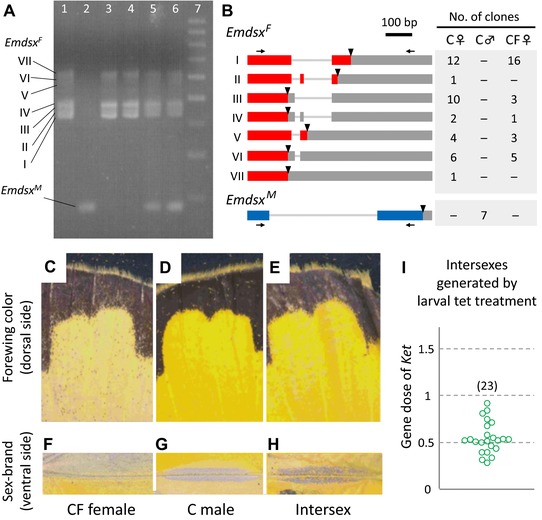Figure 4.

Effects of wFem on splicing of the doublesex gene in E. mandarina. (A) Reverse‐transcription polymerase chain reaction (RT‐PCR) products of E. mandarina doublesex (Emdsx) run on an agarose gel. Lane 1: C female; lane 2: C male; lanes 3 and 4: CF females; lanes 5 and 6: intersexes generated by tetracycline (tet) treatment of larvae produced by CF females; lane 7: 100‐bp ladder. Females have at least seven splicing products, whereas males have a single product. (B) Structures of the splicing products of Emdsx. Translated regions are indicated by red and blue bars, untranslated regions by gray bars, and stop codons by triangles. Numbers of clones obtained by cloning the RT‐PCR products are shown in the table on the right. (C–H) color and morphology of forewings. Females are pale yellow on the dorsal side of the forewings (C) and do not have sex brand on the ventral side of the forewings (F), while males are intense yellow on the dorsal side of the forewings (D) and have sex brand on the ventral side of the forewings (G). Many of the intersexes generated by tet‐treating CF larvae are strong yellow on the dorsal side of the forewings (E) and have faint sex brand on the ventral side of the forewings (H). (I) Estimate of the gene dose of Ket (relative gene copies per copy of EF‐1α) by genomic qPCR in each of the intersex CF individuals that were produced by tet treatment during larval stages. Each circle represents an adult offspring.
